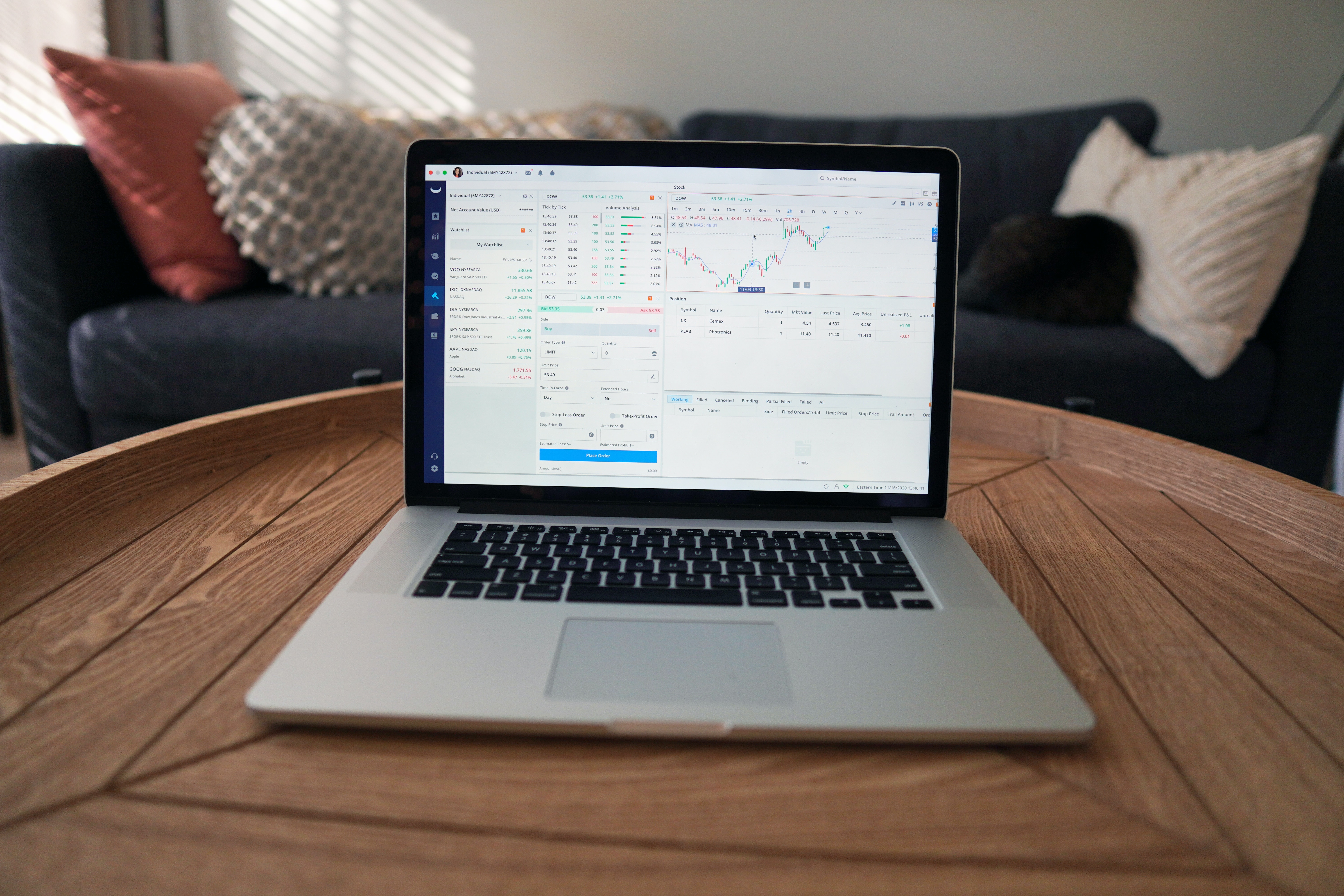Harga Purata Wajaran Isipadu (VWAP) - Maksud dan Pengiraan
VWAP Isi Kandungan: PERKARA PENTING APA ITU VWAP? KEPENTINGAN HARGA PURATA TERTIMBANG VOLUM CARA MENGIRA VWAP CARA MENGGUNAKAN HARGA PURATA...
02.10.2025 04:00
Derivatif - Definisi, Jenis, Kebaikan dan Keburukan
Derivatives – Apakah Ia? Para pedagang kini semakin tertarik dengan konsep derivatif. Instrumen kewangan ini dianggap sebagai alat yang lebih ...
02.10.2025 04:00
Corak Bendera - Apa Itu Dan Cara Ia Berfungsi
Corak Bendera Senarai Kandungan APA ITU BENDERA? BAGAIMANA CORAK BENDERA BERFUNGSI JENIS-JENIS CORAK BENDERA YANG PERLU ANDA PERHATIKAN APA ...
02.10.2025 04:00
DKK kepada PLN: Ramalan dan Ramalan Krone Denmark kepada Zloty untuk 2025 dan Seterusnya
Ramalan DKK ke PLN: Ramalan Kadar Pertukaran Mata Wang Krone Denmark ke Zloty Poland Ramalan kadar pertukaran Krone Denmark kini semakin menda...
11.09.2025 03:36

Ramalan Euro kepada Zloty untuk 2025, 2026, 2027, 2028 - 2030: Ramalan EUR kepada PLN
Ramalan Euro terhadap Zloty bagi Tahun 2025 – 2028 Kekal peka terhadap turun naik pasaran pertukaran asing yang tidak menentu amat penting bag...
27.05.2025 03:07
Ramalan USD kepada JPY untuk 2025, 2026, 2027, 2028–2030: Ramalan Harga Dolar kepada Yen
Ramalan USD/JPY untuk 2025 dan Seterusnya Kandungan Sorotan Utama Ringkasan Ramalan Kadar Pertukaran USD/JPY Analisis Teknikal USD/JPY S...
22.05.2025 19:03
Ramalan Harga Perak 2025, Carta Harga untuk 10 & 20 tahun
Ramalan Harga Perak Meramalkan Harga Perak pada Masa Depan adalah topik yang menarik minat para pelabur, pedagang, dan peminat. Memandangkan per...
22.05.2025 01:33
Ramalan Harga Emas 2026 - Ramalan untuk 5,10 & 20 tahun
Ramalan Harga Emas Digunakan sebagai alat pertukaran dan perdagangan sejak zaman purba, emas telah dianggap sebagai salah satu aset yang pa...
26.03.2025 16:38

Dollar to Zloty Forecast for 2025, 2026, 2027, 2028 - 2030: USD to PLN Prediction
Ramalan Tukaran Dolar ke Zloty 2025 - 2030 Memahami dinamik pasaran forex adalah penting bagi kedua-dua pelabur baru dan berpengalaman. Ia mem...
08.11.2024 03:53

Ramalan dan Ramalan GBP (pound British) untuk 2025 dan Seterusnya
Ramalan GBP untuk tahun 2025 dan seterusnya Memahami peranan pound British amat penting ketika kita meneliti ramalan GBP untuk tahun 2025 dan ...
22.10.2024 06:20
72 / 5.000 Prakiraan dan Prediksi Harga Gas Alam untuk Tahun 2025, 2030 dan Selanjutnya
Ramalan Gas Asli & Prediksi Harga untuk 2025, 2030 dan Seterusnya Jadual Kandungan Ramalan Harga Gas Asli & Prediksi Harga –Ringkasan Gambaran...
09.04.2024 00:21

Ramalan dan Ramalan USD (Dolar AS) untuk 2025 dan Seterusnya
Ramalan USD untuk 2025 dan Seterusnya Dolar AS (USD) kekal sebagai salah satu mata wang yang paling banyak dipegang dan diperdagangkan di selu...
10.03.2024 00:35
Ramalan dan Ramalan USD/NOK untuk 2025 dan Seterusnya
RAMALAN USD KE NOK Jika anda memilih untuk berdagang mata wang utama, terutamanya yang berasal dari Eropah, Krone Norway seharusnya ada dalam ...
03.03.2024 04:49
)
EBIT vs. EBITDA: Definisi & Formula
EBIT vs. EBITDA: Definisi & Formula EBITDA dan EBIT, yang bermaksud pendapatan sebelum faedah, cukai, susut nilai, dan pelunasan, adalah d...
14.08.2023 16:19

Apakah Penunjuk MACD dalam Perdagangan Saham & Cara Membacanya
Apa itu MACD: Cara Membaca dan Menggunakannya Strategi mengikuti trend yang berjaya memerlukan lebih daripada sekadar memerhatikan pergerakan ...
08.08.2023 18:13

Apakah Kecairan Kewangan: Definisi, Formula & Contoh
APA ITU KECAIRAN KEWANGAN? Isi Kandungan KECAIRAN KEWANGAN: DEFINISI & MAKNA APAKAH ASET? APAKAH KECAIRAN ASET? JENIS-JENIS KECAIRAN FAKTOR...
08.08.2023 01:04

Apa itu Saham dan Obligasi: Perbedaan dan Perbandingannya
Saham vs. Bon Mencapai kemakmuran kewangan adalah aspirasi yang umum. Setiap orang ingin meningkatkan kehidupan mereka dan kehidupan orang yan...
26.07.2023 10:22

Di mana dan Cara Membeli Bon Kerajaan dari Poland dan Amerika Syarikat
Cara Membeli Bon Perbendaharaan? Asas Pendidikan Pelaburan Anda - Cara Membeli Bon Perbendaharaan Asas pendidikan pelaburan anda seharusnya...
24.07.2023 03:22
DOJI CANDLESTICK
DOJI CANDLESTICK Isi Kandungan Apakah Corak Doji? Apakah Lilin Doji? Bagaimana Japanese Candlestick "Doji" Terbentuk? Bagaimana Ia Ber...
18.07.2023 14:08
Just2Trade telah memenangi anugerah Broker Multi-Aset Terbaik // Asia - 2021
Just2Trade, sebuah syarikat kewangan terkemuka untuk pelabur swasta di seluruh dunia, telah memenangi anugerah Broker Multi-Aset Terbaik // As...
18.05.2021 11:04
Dagangan Forex - Di mana untuk bermula?
Forex adalah pasaran perdagangan mata wang terdesentralisasi global, yang merupakan pasaran cecair terbesar di dunia dan salah satu yang paling...
19.05.2020 15:53